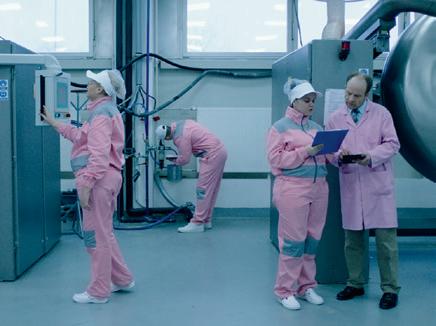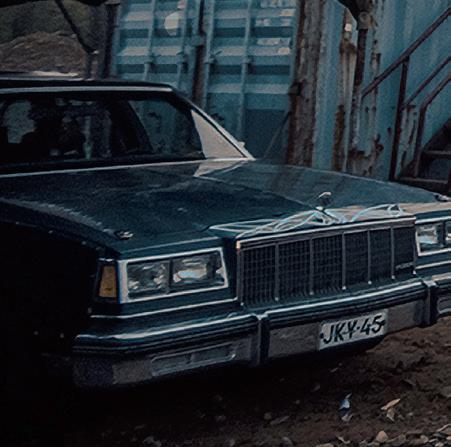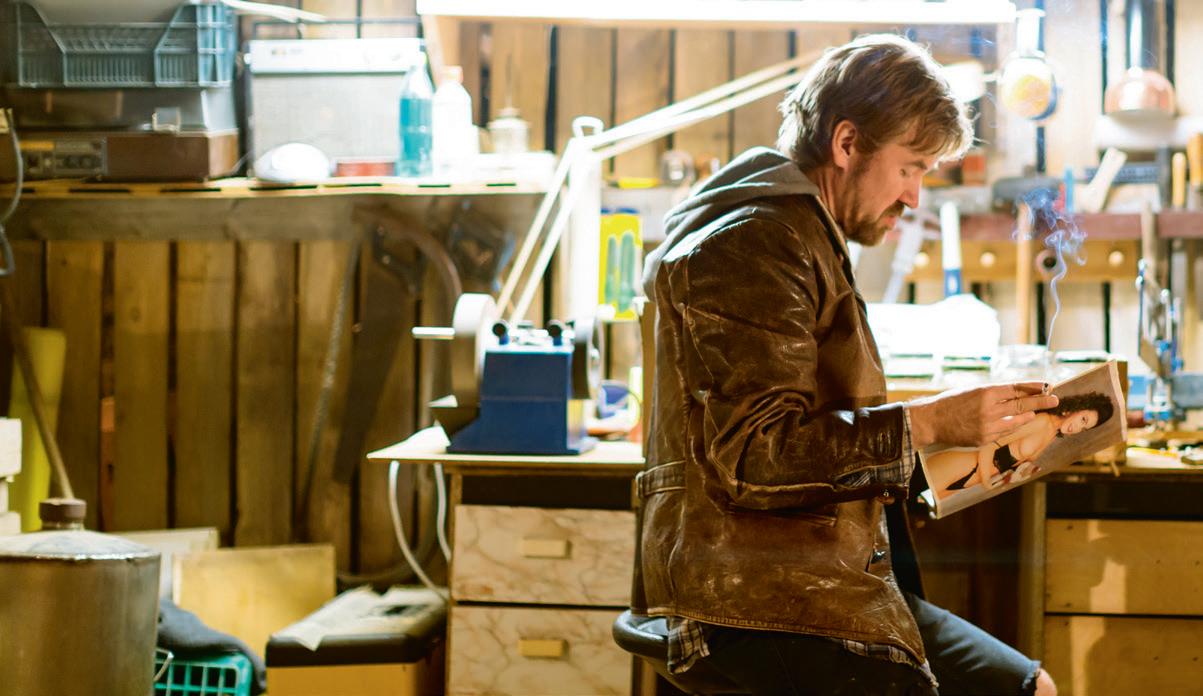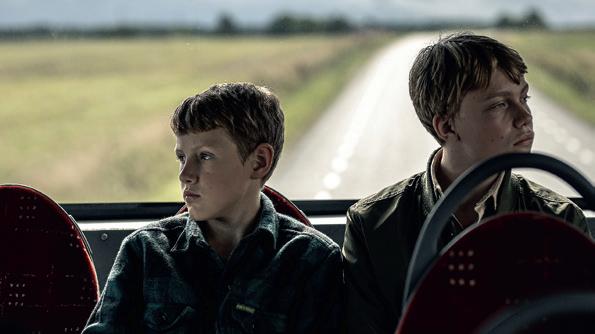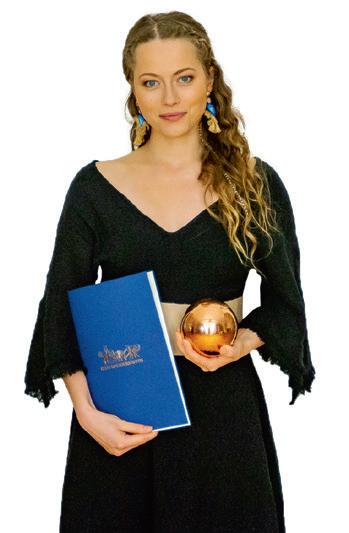
10 minute read
NEWS Cultural Endowment Awards. Praise from Critics. 101 Estonian
Mati Kütt
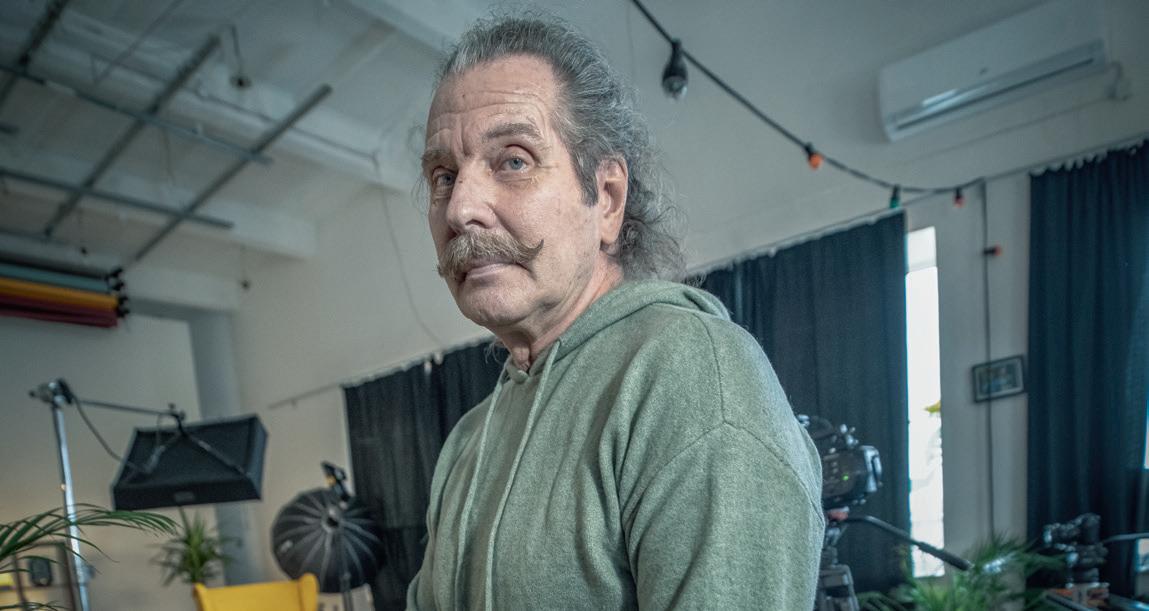
Great Job!
Cultural Endowment of Estonia presented awards in February for creative activities in the fi eld of audio-visual art in 2020. Due to the pandemic, the traditional gala evening was not held; awards were presented via a TV programme.
By EFI
This year, Cultural Endowment decided to present the Lifetime’s Achievement Award to animation director Mati Kütt who has always held the arthouse flag high in Estonian animation. He is one of the best known animators in Estonia with a surrealist approach and uncompromising artist’s character. The jury has stated the following: “Throughout his career, Mati Kütt has never tried to find a comfortable and smooth path; instead, he has rather always searched for an abyss that he could walk down with courage. His films do not attempt to be liked by viewers; and therefore, the films are especially liked by those who agree on following the film into the unknown. Because who knows what will be waiting for them? Perhaps the underwater animation opera The Smoked Sprat Baking in the Sun in German? Mati Kütt’s artwork has been largely influenced by dreams, his films encourage the viewer to let go of everyday reality and to fantasize about the world The Best Male Actor award went to Indrek Ojari who performed a role in the same feature film. The Best Actoress award was given to Henessi Schmidt for her role in the feature film Where the Heart Is. The special award in the genre of documentaries went to Margit Lillak with less rules, more surprises and for the excellent social approach in endless possibilities.” directing a participatory documen-
The main award for 2020 was tary The Circle. The Best Experipresented to the feature film The mental Film award was presented Last Ones directed by Veiko Õun- to Ülo Pikkov and his film The puu for expanding upon socially puu for expanding upon socially Tortoise and the Hare. The Best Tortoise and the Hare important themes in an exquisite important themes in an exquisite Camera Work award went to Meelis Camera Work award went to Meelis artistic form. The jury’s comment: artistic form. The jury’s comment: Veerments for his work in the Veerments for his work in the “The film skilfully combines black “The film skilfully combines black historical spy thriller O2. The Best historical spy thriller humour and apocalyptic emotions. humour and apocalyptic emotions. Young Filmmaker award was given Young Filmmaker award was given For the director it is the first time For the director it is the first time to Raul Esko and Romet Esko. The to Raul Esko and Romet Esko. The to make a film in a foreign country to make a film in a foreign country Best Documentary award went Best Documentary award went and in a foreign language, and in a foreign language, to Jaan Tootsen and Joosep to Jaan Tootsen and Joosep to work with actors from to work with actors from Marjus for directing the film Marjus for directing the film two different nations and two different nations and Fred Jüssi. The Beauty of according to someone Being. The Best Artist award Being else’s screenplay – and was divided between Otso was divided between Otso yet, Õunpuu has brilliantly yet, Õunpuu has brilliantly Linnalaakso and Jaanus Linnalaakso and Jaanus managed the task. This Vahtra for their contribuVahtra for their contribuhas resulted in an artistihas resulted in an artisti- tion to The Last Ones. The tion to cally powerful story with Best Composer award was Best Composer award was a unique style that is given to Misha Panfilov for given to Misha Panfilov for supported by a strongly creating the soundtrack for creating the soundtrack for ethical artist’s position the feature film Rain. Also, the feature film as well as by a concern numerous other awards were numerous other awards were for tomorrow.” given for those working behind given for those working behind
The Best Debut Film award The Best Debut Film award the scenes as well as those the scenes as well as those went to Rain, written and maintaining the progression of maintaining the progression of directed by Janno Jürgens. directed by Janno Jürgens. Estonian film. EFEstonian film.
The winner of the Best Actress award, Hennessi Schmidt.
PRAISE FROM CRITICS
In January, the Estonian Association of Film Journalists announced the awards for the Best Film and the Best Film Journalist of 2020 in Estonia.
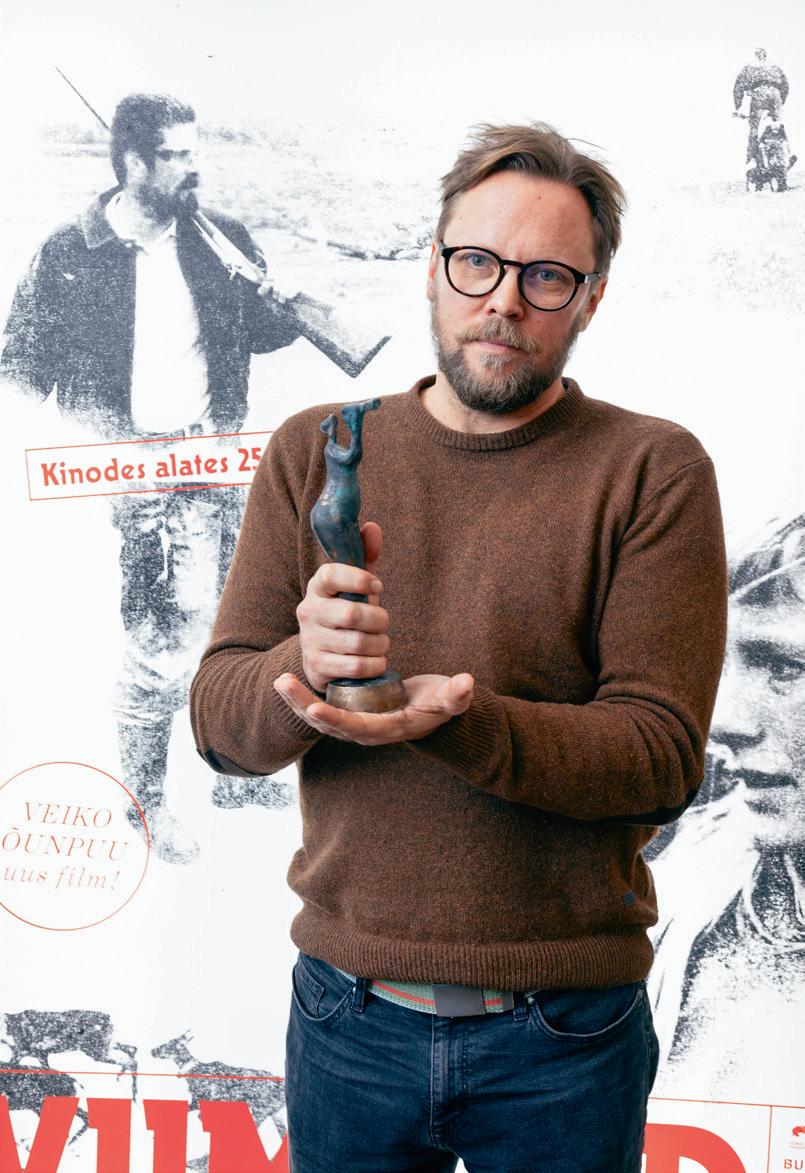
By EFI
The Virgin Maali Award, the oldest film award in Estonia, that has been presented since 1993, went to the feature film The Last Ones directed by Veiko Õunpuu, a co-production of Estonia, Finland and the Netherlands.
Andrei Liimets, chairman of the Estonian Association of Film Journalists, commented: “Veiko Õunpuu, the laureate of the Virgin Maali Award for the fourth time, has on one hand a strong and recognizable artistic style and on the other hand he knows how to leave enough space in his films to be filled with meaning by the viewer.”
The Last Ones is a Nordic Western which takes place in the untamed Lapland tundra. The protagonist is young miner Rupi (Pääru Oja) who hopes to scrape together enough money through excavating the tundra to forever shake the suffocating dust of the mining village from his feet. But the work has come to a halt because Rupi’s father – a reindeer herder – refuses to sell his land. What’s more, the manipulative mine owner nicknamed the Fisherman (Tommi Korpela) has his eye on Rupi’s friend’s wife Riitta (Laura Birn), a woman who Rupi is also secretly in love with. Now that life in the mining village is becoming more dangerous day by day, Rupi must decide where and to whom his loyalty belongs.
Among other candidates for the Virgin Maali Award was the documentary The Circle directed by Margit Lillak, the documentary Fred Jüssi. The Beauty of Being directed by Jaan Tootsen, feature film Rain, a debut film by Janno Jürgens, and historical spy thriller O2 directed by Margus Paju.
The Film Journalist of the Year award was given to Tristan Priimägi for his book of remarkable importance 101 Estonian Films.
The Virgin Maali is the oldest film award in Estonia, this year it was presented for the 28th time. The Estonian Association of Film Journalists was founded in 1993 and is a member of the International Federation of Film Critics FIPRESCI. EF
Director Veiko Õunpuu and the Virgin Maali award that he receiver for The Last Ones.
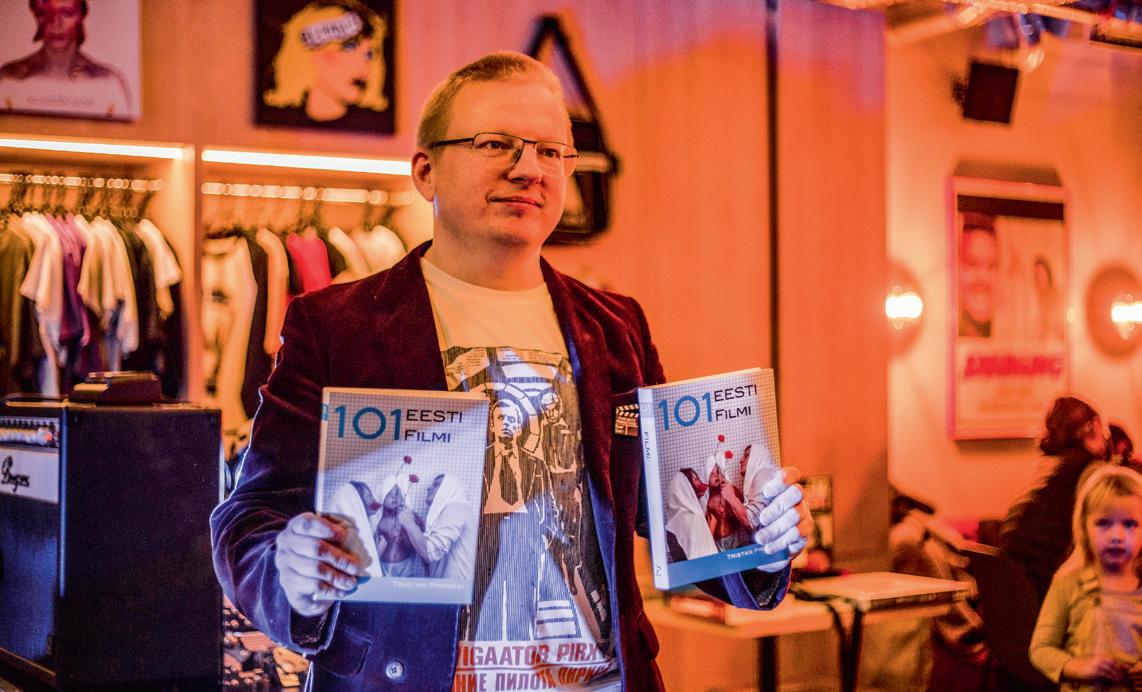
101 Estonian Films
By Maria Ulfsak
Tristan Priimägi, who was announced as the Film Journalist of the Year in January, studied semiotics at the University of Tartu, but he did not become a professional semiotician. Many know him as the long-term head of international relations at the Estonian Film Institute and a true movie buff. Since 2014, Tristan works as an editor of film pages in the cultural weekly Sirp. However, his colleagues decided to give him the award of The Film Journalist of the Year for his book 101 Estonian Films that was published at the end of 2020. The book presents a subjective, unique and intelligent overview of the best works in Estonian film history. Hopefully the book will be translated into English soon.
Tristan, why did you write the book? Was it an easy or a difficult task for you? It was actually a proposal from the publishing house. This project had, as I gather, become a sort of hot potato that bounced from one time-deprived author to the other, ending up on my desk in 2015. Out of a stupid sense of responsibility, some curiosity, and blissful ignorance, I accepted. And I count myself very lucky that life interfered big time, and I didn’t basically make any progress in writing for several years. The idea had some time to gestate and I believe that the final result only gained from this. Additionally the Estonia 100 films gave it a coherent frame. I couldn’t have had it sooner. For a while I was convinced it won’t see the light of day, at least from me. To be frank, the 2020 pandemic was like a lottery win. Suddenly all the other engagements just stopped and I could concentrate solely on the book.
Writing about Estonian film has largely been limited to a handful of hits, and it’s inevitable that everything gets reduced to basics in time. I think it’s up to us film writers to forcibly expand that range. That was one of the main intentions.
What kind of surprises or new knowledge did the process of compiling this book offer to you personally? There’s so much to learn. About the films and authors, the production methods, censorship, power politics in the Soviet times, then the switch from almost total control to relative anarchy after the collapse of the USSR, and painfully reassembling and rebuilding all the production infrastructure until the last decade, when a sort of stability has been achieved for the first time during our independence. The film industry in the temporal context is always most interesting.
And there are so many films we have forgotten unfairly.
Hopefully the English version of the book will materialize too; it would be interesting to know how much sense it all makes to a foreign reader. EF
Film critic Tristan Priimägi introducing his book 101 Estonian Films.
Art of the Undergods
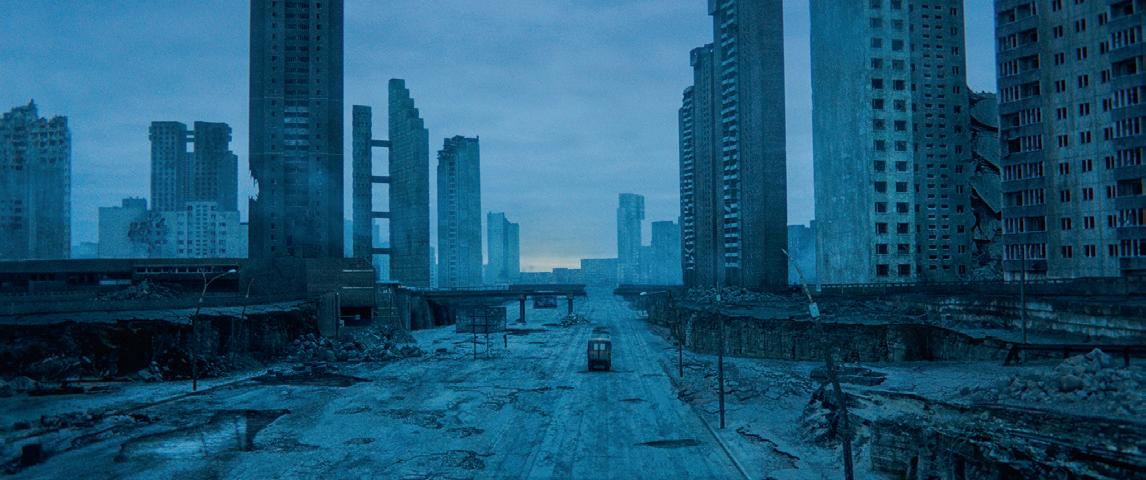
Science-fiction fantasy feature Undergods is a co-production of the United Kingdom, Belgium, Estonia, Serbia and Sweden. The Estonian premiere of the film was held at the Black Nights Film Festival 2020.
By Maria Ulfsak
Estonian concept artist Elo Soode, who had an essential part in designing the visual appearance of the film, was nominated for her work with production designer Marketa Kornikova on Undergods at the British Independent Film Award BIFA.
The Estonian co-producer of the film is Katrin Kissa from the production company Homeless Bob Production. “This nomination was a great acknowledgment for both Elo Soode and the film itself. The concept artist often has a key role in the early phase of a film. She visualizes the ideas of the director, art director and cinematographer before the filming starts and according to her detailed design the environments for the film are created. It is difficult to overestimate Elo’s professional role in Undergods. She has created a great part of the cityscape visions that were included in the film using computer animation. Several local environments have been used and included in the film, for instance, the Lasnamägi district in Tallinn, and the Kreenholm Factory in Narva. It is also remarkable that the other nomination of the film – Agnes Asplund and Martin Malmqvist for the best visual effects – is also connected to Elo Soode’s work,” explained the co-producer Katrin Kissa.
Elo Soode is a production designer and concept artist. She graduated from the department of scenography at the Estonian Academy of Arts in 2008 and the department of production design at the National Film and Television School (NFTS), Great Britain in 2014. Among Soode’s previous works have been the feature film Paddington 2 (2017), Annihilation (2018) and TV-series Chernobyl (2019) and The Great (2020).
Besides Soode, Estonian makeup artist Kaire Hendrikson also played an important part in creating Undergods. Estonian actress Katariina Unt also had a small role in the film.
Undergods is the debut feature by Spanish director Chino Moya, filmed both in Serbia and Estonia. The film is a collection of dark humour, surreal stories about hopeless people and their tragic misadventures. According to the director, the film is an otherworldly journey through a Europe in decline, but it also depicts an endless journey through human weaknesses and predestined mishaps.
The landscapes of Undergods were created by concept artist Elo Soode.
The main roles in the film are performed by Hungarian actor Géza Röhrig (the star of the Academy Award winner Son of Saul); Jan Bijvoet and Ned Dennehy, known from the TV-series Peaky Blinders; Michael Gould who has also participated in Star Wars: Rogue One and several internationally acclaimed actors.
BIFA (British Independent Film Award) is a film award founded in 1998 to value independent British films and filmmakers. In 2021, the awards were presented on February 21st.
Undergods was produced in collaboration with Z56FILM, Velvet Films, Homeless Bob Production, Media Plus and Filmgate Films. The producer of the film is Sophie Venner, co-producers are Katrin Kissa, Sebastian Schelenz, Goran Djikic and Sean Wheelan. From the Estonian side the film was supported by the Cultural Endowment of Estonia and the Estonian Film Institute. EF
